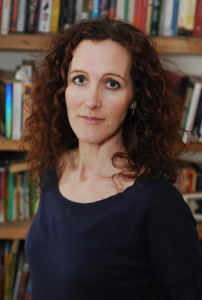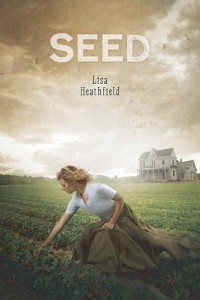“Three Bowls of Porridge…” by Lisa Heathfield, Author of Seed
When I write, I have a ‘writing spirit’ that takes over. I sit for hours at the kitchen table, pen in hand and time sort-of stops. I don’t really know what I’ve written until I read back over my words. So I was surprised when reading a day’s work on my book, Seed, to see the line: ‘There are three bowls on the table, the porridge still warm.’ It seemed lifted straight out of the fairytale ‘Goldilocks and the Three Bears’.
A few days later, it happened again. When I read how Bobby was making a tiny house out of sticks, it made me think of the tale of ‘Three Little Pigs’. I then realised who Nana Willow reminded me of – tucked up in her bed, with blankets pulled up to her chin, she was the image of Little Red Riding Hood’s grandmother. And outside, the wolf, in the guise of Papa S, was waiting.
In so many fairytales, there’s a wicked character that the protagonist must overcome – could this be Papa S? A handsome prince swoops in to save the day – is Ellis inadvertently walking in these shoes? Am I clutching at straws to say that Pearl leaving her slippers in Papa S’ chamber is reminiscent of ‘Cinderella’? I don’t think I am. Because since seeing references to fairytales scattered amongst the lines of SEED, I can see their influence everywhere. I wonder if the roots of fairytales are in every book we read?
The writer and child psychologist, Bruno Bettelheim, said that fairytales were ‘consoling’ to children, yet having re-read many of them recently, I think I sit more squarely in Angela Carter’s camp, seeing fairytales as violent and menacing. Many fairytales have true horror at their core. Take ‘The Juniper Tree’ – in it, a woman cuts off the head of her step-son, attempts to hide her crime by tying his head back onto his neck, before chopping him up into a stew which she feeds to his father. I could hardly bear to read it, yet it began its life as a story for children! Perhaps it’s a natural progression then, that teenagers go on to devour so-called ‘dark’ books. Is any theme ‘off-limits’, when they’ve been fed a literary diet of kidnapping, murder and corruption from such a young age?
With the memory of fairytales unintentionally at SEED’s core, it’s perhaps unsurprising that parts of it are dark. Unsettling themes weave in and out of the pages. It appears that my ‘writing spirit’ was definitely paying attention and taking notes all those years ago. However, she seems to have missed out something crucial – the ‘happily ever after’ part. Maybe she can sort it out in SEED’s sequel…
About Lisa:
Lisa always dreamed of being a writer. She wrote her first book when she was nine – set in a haunted house, in the middle of a dark wood! And she’d sit for hours at her typewriter, creating stories to send off to magazine competitions (none of which got close to winning, but it didn’t put her off trying).
She was always reading. Lying in the grass, on her bed, up a tree, there was always a book in her hand. It was only natural that she would study English at university and go on to become an English teacher in a secondary school. An early fascination with Helen Keller followed her to the classroom and she began teaching hearing-impaired children.
Lisa and her husband settled in Brighton, on the south coast of England, where she concentrated on raising their three wonderful boys. After an ill-advised stint running a cafe, the need to write became too difficult to ignore. And her debut novel, Seed, was born.
About Seed:
Fifteen-year old Pearl has lived her whole life protected within the small community at Seed, where they worship Nature and idolize their leader, Papa S. When some outsiders join, everything changes. Pearl is forced to question everything she’s ever known and all she’s ever believed in. As she prepares to become Papa S’s Companion for the first time, she begins to realize that there’s darkness at the heart of Seed, a darkness that she must escape, before it’s too late.
Excerpt from Seed:
Thank you so much to Lisa for being our special guest this Sunday!



